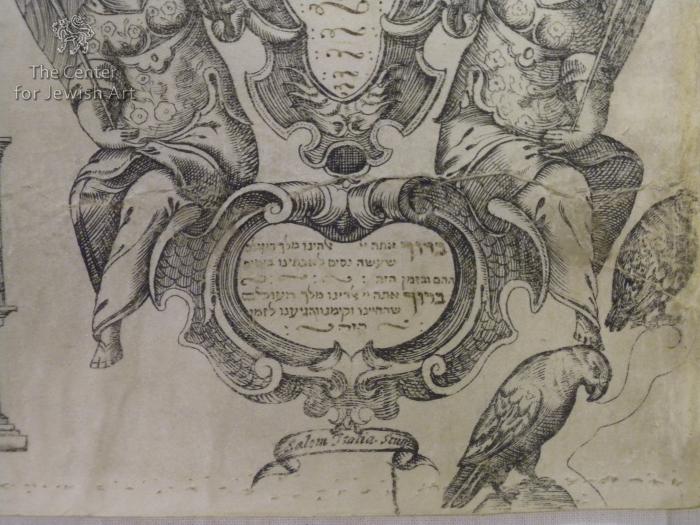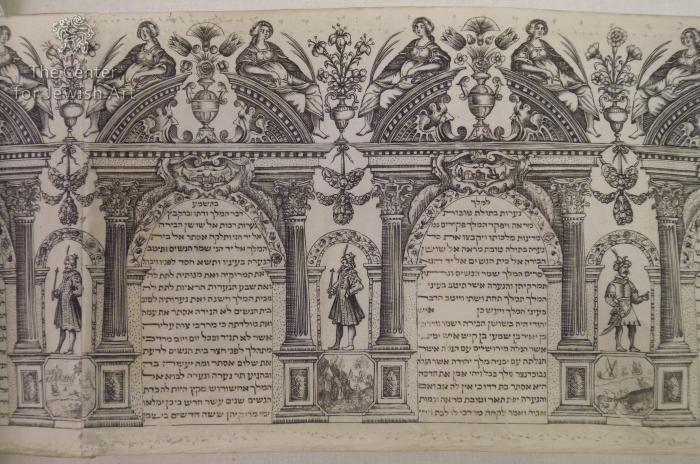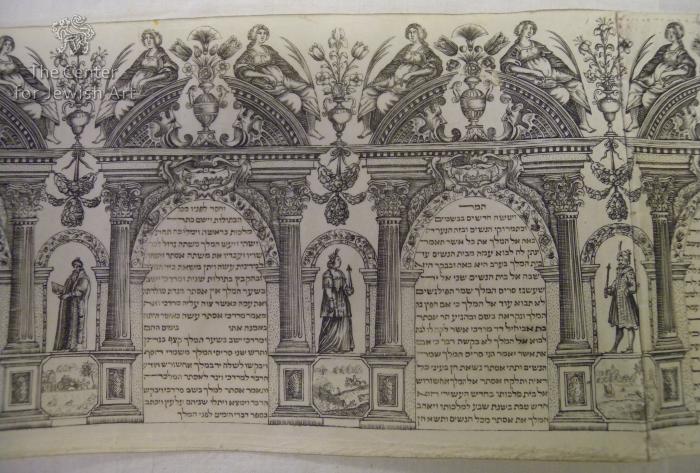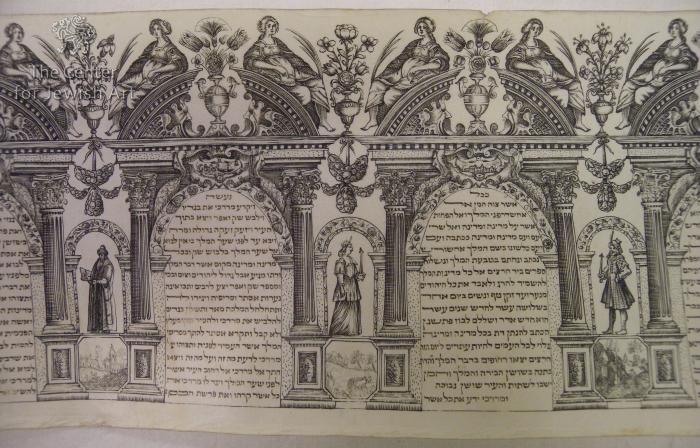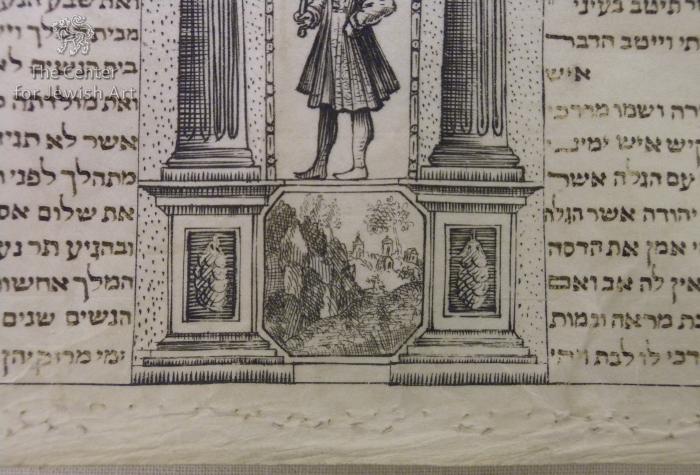Obj. ID: 38122 JMNY Shalom Italia Engraved Esther Scroll with Ladies, Amsterdam, 1640s

Lavishly decorated Esther scroll adorned with an engraved border designed by Shalom ben Mordecai Italia (also known as Shalom D'Italia).
The scroll opens with a symmetrical decoration based on a semicircle that is composed of six birds (a pair of owls (?) - not visible in this copy, quails or partridges, and parrots) with a flower in a central place of it (invisible here). Next to it, two angels with trumpets support a decorative cartouche with a heraldic helmet above it. On its field, a family emblem composed of a tree and hands in the gesture of priestly blessing is drawn by hand. Below the empty cartouche, the name of the artist appears.
The same engraved metal plate was used for all membranes; therefore, the decorative scheme repeats along with the entire length of the scroll. The Hebrew text of the Book of Esther is inscribed within elaborately decorated arcades (eight per sheet) on which ornamentation of the upper margins is placed. They are filled with repetitive elements: two women with their heads turned away from one another, holding palm branches and leaning on broken pediments (possibly an allegory of Peace), flower-filled vases placed inside the pediments and between them, and decorative masks. In the elongated cartouches placed at the top of the arches, various land- and cityscapes are included. Full figures of four Esther story protagonists are placed in the niches between the text panels; every figure of Ahasuerus, Esther, Mordecai, and Haman appears twice on each sheet. They stand on small octagonal pedestals on which eight different land- and seascapes are depicted.
The Book of Esther in Hebrew
The scroll sharing the same pattern is stored in the Braginsky Collection in Zurich (megillah no. 27); for another one see ID 34762.
Bibliography concerning the scrolls designed by Shalom Italia or attributed to him:
Sharon Assaf, Emily D. Bilski, Salom Italia’s Esther Scrolls and the Dutch Golden Age, Amsterdam 2011.
A Journey through Jewish Worlds: Highlights from the Braginsky Collection of Hebrew Manuscripts and Printed Books, eds. E.M. Cohen, E. Schrijver, S. Liberman Mintz, Amsterdam 2009, 228-231 (describes another scroll designed by Shalom Italia).
Michael Garel, An Esther Scroll by Shalom Italia, "The Israel Museum Journal" 5 (Spring 1986), 107–108.
Mordecai Narkiss, Yeẓurato shel Shalom ben rabbi Mordechai Italia (1619–1655?) [The Oeuvre of the Jewish Engraver Salom Italia (1619–1655?)], “Tarbiz” 25(4), 1956, 441–451, and: ibidem no. 26(1), 1957, 87–101.
Shalom Sabar, A New Discovery: The Earliest Illustrated Esther Scroll by Shalom Italia, „Ars Judaica” 2012, no. 8, 119–136.
Schöne Seiten. Jüdische Schriftkultur aus der Braginsky Collection, eds. Emile Schrijver, Falk Wiesemann, Evelyn M. Cohen, Sharon Liberman Mintz, Menahem Schmeltzer, Zurich 2011, 274‒279.
Dagmara Budzioch, The Decorated Esther Scrolls from the Museum of the Jewish Historical Institute in Warsaw and the Tradition of Megillot Esther Decoration in the Seventeenth and Eighteenth Centuries – An Outline [Polish: Dekorowane zwoje Estery z Żydowskiego Instytutu Historycznego w Warszawie na tle tradycji dekorowania megilot Ester w XVII i XVIII wieku. Zarys problematyki], Warsaw 2019, 1:155‒159.
Claudia de Benedetti, Italia ebraica, storie ritrovate. Scritti in onore di Vivian Mann z.l. / Jewish Italy, rediscovered stories. Essays written in honor of Vivian Mann z.l., Roma 2019, 17-23.




